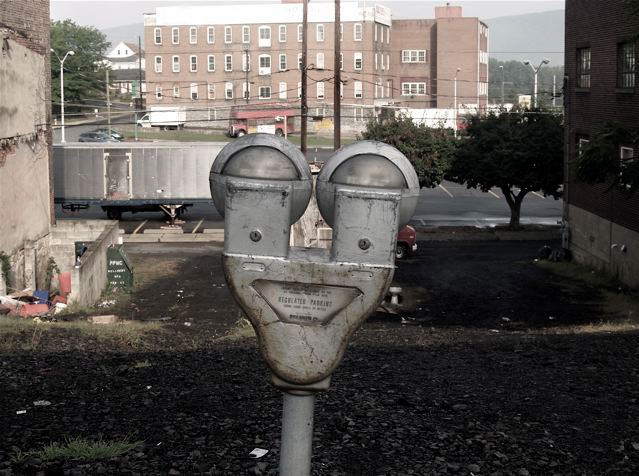Philip A Dente writes that in his pictures of towns in Northeastern Pennsylvania he tries to “to demonstrate the feeling of a continual loss of the past through the disruptions of the present.”

Pittston (C) 2008, Philip A Dente
Visually we see this in many images where we see through gaps or past obstructions giving a layering of planes and also in the softish light and muted colours that appeal to him. The pictures are his account of “an exciting journey …. in the context of vision and emotions.”
Philip is the latest photographer to be added to the Urban Landscape web site I run with Mike Seaborne, the full international eleven now being:
John Davies, Philip A Dente , Lorena Endara, Bee Flowers, Nicola Hulett, Peter Marshall, Paul Anthony Melhado Neal Oshima, Paul Raphaelson, Mike Seaborne and Luca Tommasi.
Although I feel it’s a strong team, new players are always welcome, but sometimes it takes us rather a long time to come to a decision. One key problem is always to decide whether a particular body of work fits our concept of ‘urban landscape‘. It isn’t just a matter of pictures taken of cities or areas of cities -whether pretty or gritty, and there seem to be quite a few groups now on Flickr and elsewhere dedicated to one or other of these.
Nor is it straightforward architectural images. Last year in Brasilia I talked about this distinction – and you can read my thoughts in the excessively literally titled post
Architecture and Urban Landscape photography
You can also of course read the page from which that post quotes on the urban landscapes site where there are some more picture examples, which also has a page of advice for contributors. As well as showing urban landscape projects we would also be interested in essays related to the area – but do read the advice before contacting us.
Of course as well as appropriateness, quality of work is also important and an even more subjective area, and not one that is easy to write about. It’s something that perhaps comes across more obviously not in individual images but in a body of work, and is more about the visual thinking that this demonstrates than the technical aspects of making and presenting work or the ability to write a polished academic statement (indeed many of the better photographers suffer from dyslexia.)
Mike Seaborne and I are the initial selectors of work, but if we have any doubts or are unable to agree, then we seek the advice of whichever of the others with work already on the site seems most appropriate.